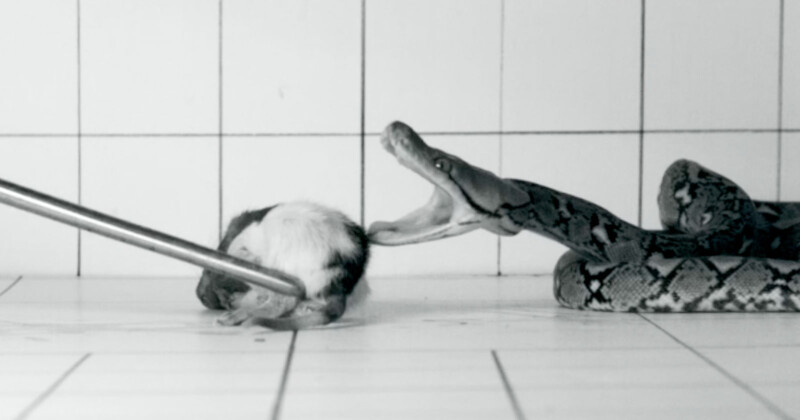Scientist Films Slow-Motion Footage of Snake Attacks to Discover How They Kill

A scientist spent years filming slow-motion footage of snakes launching at and attacking their prey — to reveal exactly how they kill.
Bill Ryerson, a herpetologist and senior lecturer in anatomy at Cornell University’s College of Veterinary Medicine, has spent the last few years peering into the mouths of snakes and filming the terrifying moment when they attack.
Ryerson used an Edgertronic SC-1 high-speed camera, filming at 1,000 frames per second, to record snakes attacking dead rodents.
“It took a few years to film all the snakes,” Ryerson tells PetaPixel. “Most of that was because some of the species are relatively hard to come by.
“The biggest challenge is making sure the snakes strike perpendicular to the camera, otherwise you cannot do the motion analysis.”
The fascinating slow-motion footage that Ryerson captured of the moment snakes launched at their prey revealed that the reptiles are either “strikers” or “lungers.” And the difference between the way these two types of snakes kill lies in their teeth.
Tooth shape, position, and size can all be used to predict the speed and direction of a snake’s strike.
Learn more: https://t.co/ctUQ7XSYNp @NewsfromScience pic.twitter.com/tyxz3SoKhb
— Science Magazine (@ScienceMagazine) January 19, 2024
“The videos revealed that not all snakes strike the same way, and that if you look at their teeth (beyond the fangs) you can begin to predict how these snakes will strike,” Ryerson explains.
“It also depends a lot on whether a snake uses venom, constriction, or neither to subdue its prey.”
According to LiveScience, Ryerson’s work revealed how snakes that are “strikers” attack at lightning speed from above, impaling their prey with needlelike teeth at the front of their lower jaw before wrapping their head over and around to inject venom with their fangs, or to squeeze the animal to death. These snakes include boa constrictors and pythons.
Meanwhile, snakes that are “lungers” strike more slowly and don’t open their mouths as wide. They make contact with both jaws simultaneously.
LiveScience reports that scientists have long focused their attention on snakes’ fangs — which are teeth modified to inject venom. However, they have largely disregarded how snakes’ teeth could be significant to how snakes have evolved to kill.
Ryerson’s work was recently published in Snakes: Morphology, Function, and Ecology edited by David Penning.
Image credits: All photos by Bill Ryerson.